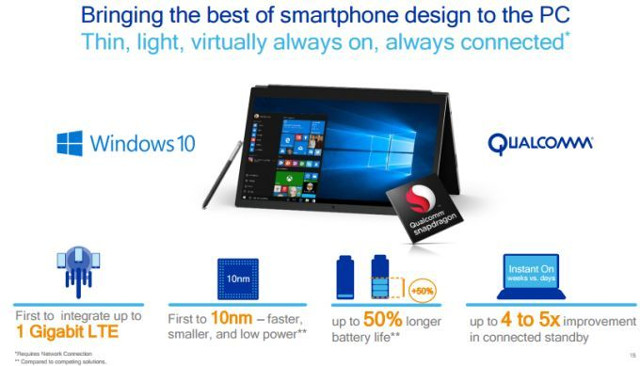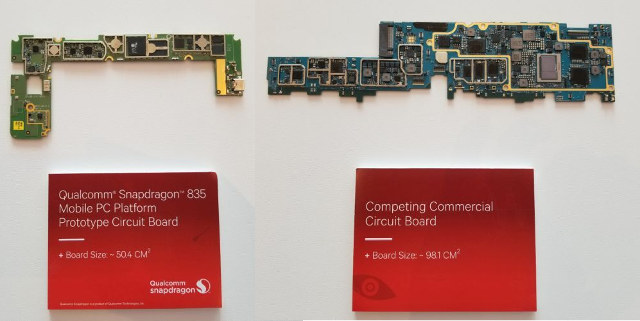Windows on ARM has been tried before with Windows RT, but the systems were crippled, and it was not exactly a success. Microsoft and Qualcomm are now giving it another try with ARM mobile computers running the full version Windows 10 on Qualcomm Snapdragon 835 processor, and Asus, HP, and Lenovo building devices based on the solution.
 There are plenty of inexpensive Intel PCs running Windows 10, so what would be the benefits of using Snapdragon 835 SoC? Qualcomm explains that it’s the first to coming integrate Gigabit LTE, it offers up to 50% longer battery life in specific use cases like watching videos and gaming, and thanks to big.LITTLE technology provides up to 4 to 5 times improvement in battery life compared to Intel’s solutions.
There are plenty of inexpensive Intel PCs running Windows 10, so what would be the benefits of using Snapdragon 835 SoC? Qualcomm explains that it’s the first to coming integrate Gigabit LTE, it offers up to 50% longer battery life in specific use cases like watching videos and gaming, and thanks to big.LITTLE technology provides up to 4 to 5 times improvement in battery life compared to Intel’s solutions.
Windows 10 does not have the same limitations as Windows RT had, and you can do pretty everything that you would on an Intel PC, including installing and running 32-bit x86 application thanks to an emulation layer that convert x86 instructions to ARM ones.

Mobile Geeks filmed a demo in Qualcomm booth, showing Office (Word, Excel, Powerpoint), Outlook, installing a 32-bit x86 application, multi-tab web browsing over an LTE connection, and playing some YouTube video, including a 4K video. As a side note, the demo guy told the “legal department told him to only show Qualcomm content”, probably because of inane copyrights laws. That’s really ridiculous that those laws apply to showing a 10s clip for an hardware demo. But I digress, and it was stressed again that it was the first time big.LITTLE was supported in Windows 10, and allowed for much better efficiency.
Via Liliputing

Jean-Luc started CNX Software in 2010 as a part-time endeavor, before quitting his job as a software engineering manager, and starting to write daily news, and reviews full time later in 2011.
Support CNX Software! Donate via cryptocurrencies, become a Patron on Patreon, or purchase goods on Amazon or Aliexpress




